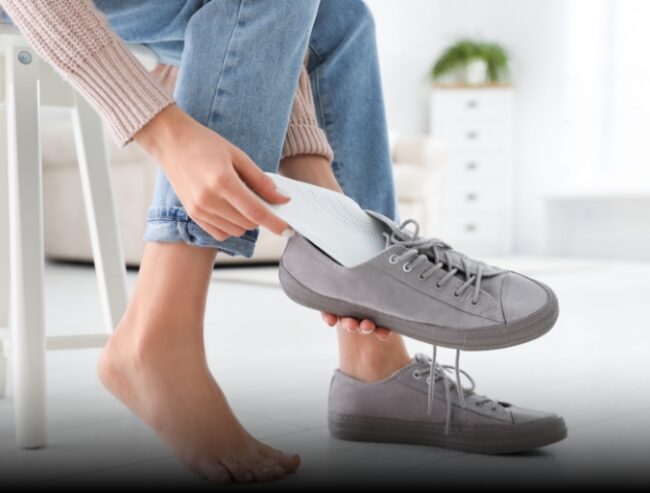If you have ever experienced a sharp and substantial pain in your heels, it might be due to stress and pressure caused in your heel and subsequent inflammation of foot tissue. The pain is usually experienced in the heel. This condition is popularly termed plantar fasciitis.
Plantar fasciitis can develop owing to numerous reasons, some of the most common ones being flat foot soles, unsupportive footwear, excessive weight gaining, enhanced physical exercise, pregnancy, etc.; it might even occur when you roll too far beyond the normal stretch line, causing strain to the foot tissues.
One of the most common signs or symptoms of this foot condition is the experience of sharp pain in your heels while walking. In most cases, the pain is worst during the first steps when you wake up in the morning or starting to walk after a rest.
However, to comfort the foot arches and your heel from excessive stress and strain orthopaedics often recommends plantar fasciitis insoles.
Treating Plantar Fasciitis
While many people tend to ignore the early signs of this foot condition and only pay attention when things worsen, with immediate attention and treatment under an orthopaedic, it has been seen over 90% of cases of this foot condition can be relieved and treated.
In most cases, specialists recommend soothing the tissues by comforting the tissues with adequate cushioning and comprehensive arch support for your foot.
Relieving the inflamed tissues is essential to minimize the pain, and plantar fasciitis insoles are designed with adequate cushioning and a particular design that offers optimum support to foot arches. Using these insoles have a multidimensional benefit, like:
- Relieves pain.
- Rectifies poor biomechanics.
- Offers added support.
- Non-invasive.
Essential Features of Plantar Fasciitis Insoles
Shock Absorption – Excessive exertion of pressure is one basic reason for this pain. The plantar fasciitis insoles have a shock absorption feature that helps in relief from pain.
These insoles are specifically designed with arch support and cushioning to enhance shock absorption and relieve the stress of your foot while you walk or stand.
Supportive Cushioning – in plantar fasciitis, while you walk, excessive pressure is exerted on your heels. However, that can be minimized with optimum cushioning. While normal footwear fails to offer that due to design, style, etc., orthotic insoles improve the foot support with heel cushioning.
Arch Support – Human foot soles are designed with an arch, which is highly important to offer support for the body weight and ease movement. However, many people tend to have either flat foot or feet with minimum arch. This is when orthopaedics recommends insoles with added arch support to relieve foot pain, offer better movement and comfort, etc.
Concluding Thoughts
Even though insoles are meant for comfort and relieving pain, it is important to take suggestions from your orthopaedic. There are different types of insoles available in the market. While these insoles are highly durable and last quite a long, you must only choose the best one.
The market is flooded with a number of options. These insoles are designed particularly to fit in all kinds of shoes; what you need to be specific about is your shoe size and according to plantar fasciitis insoles size.
Buying the best quality in-sole which is ill-fitted can add to the problem. It will fail to offer support and comfort. Again, yet another important factor is to keep a note of signs of foot pain and discomfort while walking.
Sharp of dull pain, pain while walking in the morning after getting out of bed, are prominent signs of plantar fasciitis, so consult your doctor today if you experience such pain.
You can find much more information on living a holistic lifestyle in these free magazines and on our YouTube channel.
Author Bio
I’m Nivi Watson. A blogger and content writer. What you need to be specific about is your shoe size and according to plantar fasciitis insoles size. I am writing about home improvement, health, lifestyle, technology, and much more.






